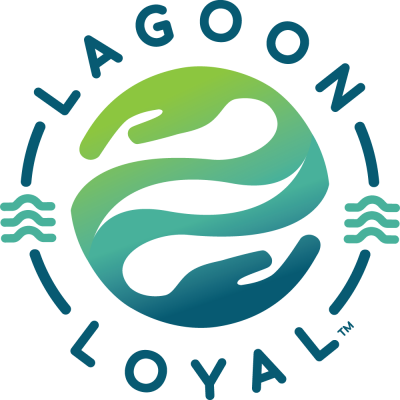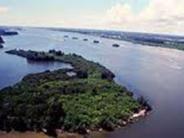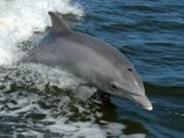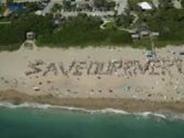Indian River Lagoon
Are You Lagoon Loyal? You can help the Lagoon and local waterways without leaving your home. Lagoon Loyal has tips and simple actions you can take in your everyday life to help reduce excess nutrient pollution to the Indian River Lagoon. You can even earn rewards when you report the actions you are taking to speed up the Lagoon's recovery.
The Indian River Lagoon (IRL) spans 156 miles (approximately 40%) of Florida's east coast, extending from Ponce de Leon Inlet near New Smyrna Beach in Volusia County to Jupiter Inlet, the southern border of Martin County. The IRL system includes 3 main water bodies: Mosquito Lagoon, Banana River and the Indian River Lagoon. Despite the use of "River" in their names, none of these water bodies are actually rivers. They have no headwaters and no mouths, and their 'flows' depend strongly on wind and tidal currents. The IRL system is an estuary, a transitional environment set between the land and the ocean. In estuaries, fresh water from uplands and tributaries meets and mixes with water from the ocean. The IRL is a particular type of estuary called a lagoon: a shallow estuary separated from the ocean by barrier islands. Lagoons like the IRL exchange water with the ocean only through inlets. Because of this restricted flow, tides are influential only near inlet areas. Throughout much of the IRL, currents are primarily influenced by winds. It is claimed to be the most biodiverse lagoon ecosystem in the Northern hemisphere and is home to more than 3,000 species of plants and animals.
The Brevard County Stormwater Program was created in 1990 by the Board of County Commissioners. Since its creation, the Program has proven to be a leader in stormwater management in the state of Florida. The Stormwater Program has established strong working relationships with St. Johns River Water Management District (SJRWMD), the National Estuary Program (NEP), local municipalities and other counties throughout the state.
Together with these agencies, the Brevard County Stormwater Program has provided assistance and recommendations for the selection and implementation of the most efficient and cost effective stormwater treatment methods.
Unfortunately, there is an ecological crisis in Indian River Lagoon. Large quantities of water with high levels of nutrient pollution from Lake Okeechobee and the St. Lucie Basin are being discharged to tide, leading to toxic algae blooms in the Lagoon’s waters. There have been numerous, mysterious reports of deaths of Pelicans, manatees, and dolphins in the area. Harmful bacteria have also been detected in some areas, making the water dangerous for human contact. See Visit The IRL Page Of The Audubon Society
Additional References:
Harbor Branch Oceanographic Institute (Florida Atlantic University)
Indian River Lagoon National Estuary Program.
Smithsonian Marine Station At Ft. Pierce
Indian River Keeper: Protecting and restoring the waters of North America’s most diverse estuary, the Indian River Lagoon, its tributaries, fisheries and habitats through advocacy, enforcement and citizen action.




